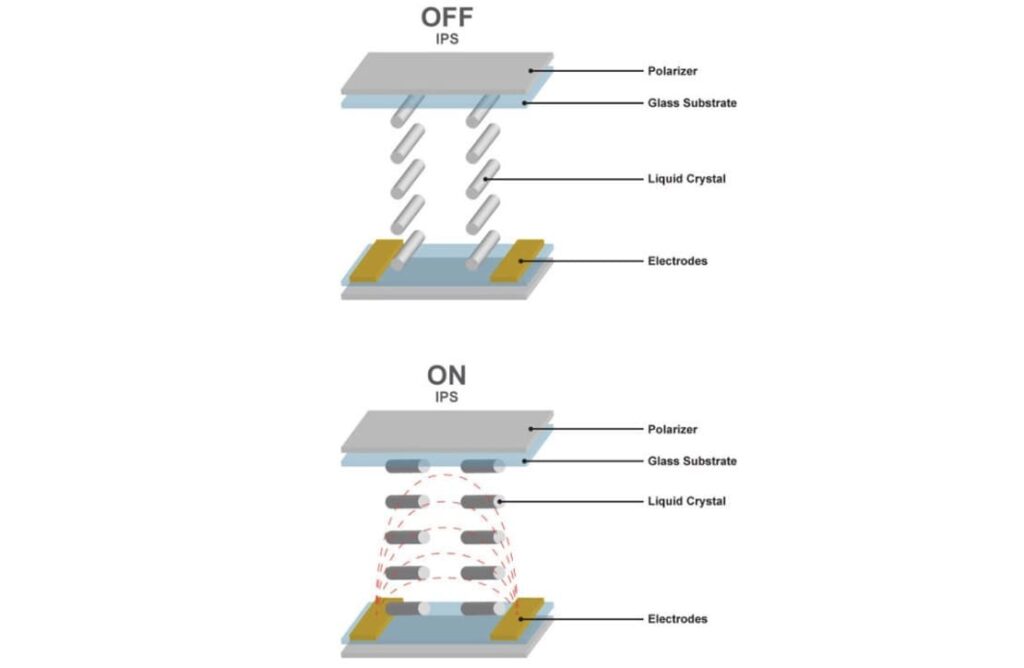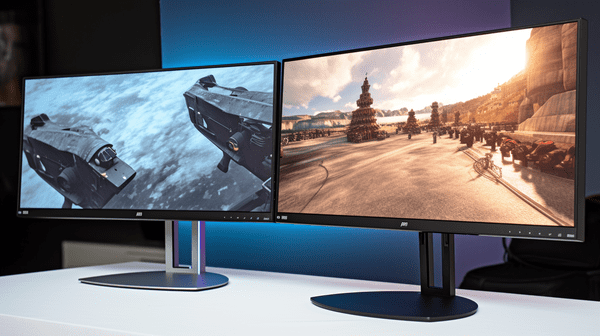IPS History
In the ever-evolving world of display technology, In-Plane Switching (IPS) has carved a unique niche for itself. Engineered in the 90s, it resolved common concerns of color consistency and narrow viewing angles, earning a reputation for being the pinnacle of LCD technology. With its incomparable color reproduction and viewing angles, it stands tall against popular display technologies like VA (Vertical Alignment) and TN (Twisted Nematic). Let’s embark on an exploration of IPS displays and their prominence in modern technology.

What is IPS?
In-Plane Switching (IPS) is an innovation in the field of TFT LCD (Thin Film Transistor Liquid Crystal Display). It presents a novel approach to the organization of liquid crystals in the display, enhancing the precision of color and overall image quality. From televisions and computer monitors to wearable devices, IPS technology is widely integrated into a plethora of electronic devices, significantly enriching multimedia experiences. What is TFT (Thin Film Transistor) LCD display?
The Inner Workings of IPS Displays
The principle behind IPS is the orientation of the liquid crystals in an LCD. The application of voltage causes the crystals to align themselves parallel (or in-plane) to the panel, allowing an easier passage of light. This reduction of interference enhances the clarity and sharpness of the final image. It is an example of a simple principle leading to a profound improvement in technology.

The Advantages of IPS Display Monitors
IPS displays take the lead when it comes to the quality of viewing angles and color preservation. The strength of IPS displays lies in their ability to render the integrity of the on-screen image, avoiding the color distortion and washouts, which are commonly experienced with TN or VA LCD screens.
The color accuracy of IPS panels offers an immersive viewing experience, making them highly sought after by graphic designers, photographers, and professional video editors who require precise color reproduction. This technology delivers superior performance in diverse environments, ranging from direct sunlight to low light conditions, indoors or outdoors.
Comparing IPS, VA, and TN Displays
When comparing the performance, color reproduction, viewing angles, and contrast of IPS, VA, and TN, each technology has its advantages and disadvantages.
| IPS | VA | TN | |
|---|---|---|---|
| Performance | Fast | Intermediate | Fastest |
| Viewing Angle | Best | Good | Worst |
| Color Accuracy | Best | Good | Worst |
| Contrast Ratio | Good | Best | Worst |
| Price | Highest | Intermediate | Lowest |
| Best Used For | Professional Work (graphic design, video editing, etc.) | General Use (balance of performance and price) | Gaming (due to fast response times) |
IPS (In-Plane Switching)
In-Plane Switching displays offer the best color accuracy and viewing angles. This makes them ideal for professional work where precise color representation is crucial. However, these superior characteristics come at a higher cost compared to VA and TN panels.
VA (Vertical Alignment)
Vertical Alignment panels sit in the middle ground. They offer better color accuracy and viewing angles than TN panels and better contrast ratios than IPS panels. They strike a balance between performance and price, making them a good choice for general use. However, they do not excel in any particular aspect compared to IPS or TN panels.
TN (Twisted Nematic)
Twisted Nematic panels are the fastest in terms of response time, making them the top choice for gamers. They are also the most affordable of the three. However, they lag behind in terms of color accuracy and viewing angles.
In a nutshell, the choice between IPS, VA, and TN comes down to your specific needs and preferences.
Reasons to Choose an IPS Display
IPS displays are lauded for their wide horizontal and vertical viewing angles, accurate color representation, and visibility under direct sunlight. Unlike TN panels, IPS displays show little to no color distortion when viewed from various angles. Their color performance is also noticeably superior to OLED displays when viewed under bright light conditions, courtesy of their powerful LED backlighting.
Moreover, IPS displays are capable of producing over 16 million colors, presenting the most vibrant and realistic hues available on any LCD. These displays are often the go-to choice for professionals in fields where color accuracy and consistency are paramount. What is LCD (Liquid Crystal Display), Anyway?
Potential Disadvantages of IPS Displays
While IPS displays bring numerous advantages to the table, they do come with a few trade-offs. They tend to consume about 15% more power than standard TN displays, which might be a point of concern for energy-conscious users. This higher power consumption is due to the backlighting required for the display.
Also, the cost of manufacturing IPS displays is higher due to the advanced technology involved, which gets passed on to the consumer. Therefore, these displays are usually more expensive than their TN and VA counterparts.
In terms of contrast, IPS displays can’t compete with OLED displays, which offer a significantly higher contrast ratio. This is because OLED technology allows for the complete shutting off of pixels to produce true blacks, resulting in higher contrast ratios. OLED vs IPS: A Classic Tech Rumble

Conclusion
As we continue to witness the advancement of IPS technology, we can anticipate its even broader application in future display technologies. Given the exceptional viewing angles and color accuracy it offers, IPS is the technology of choice for anyone seeking a superior viewing experience.
Although IPS displays might not be the fastest in terms of response time or offer the highest contrast ratios, the benefits far outweigh these minor drawbacks. From professional applications to personal use, if you’re seeking an immersive and accurate color representation, IPS displays should be at the top of your list. They strike an excellent balance between price, performance, and quality, making them a worthy investment for a wide range of users.
